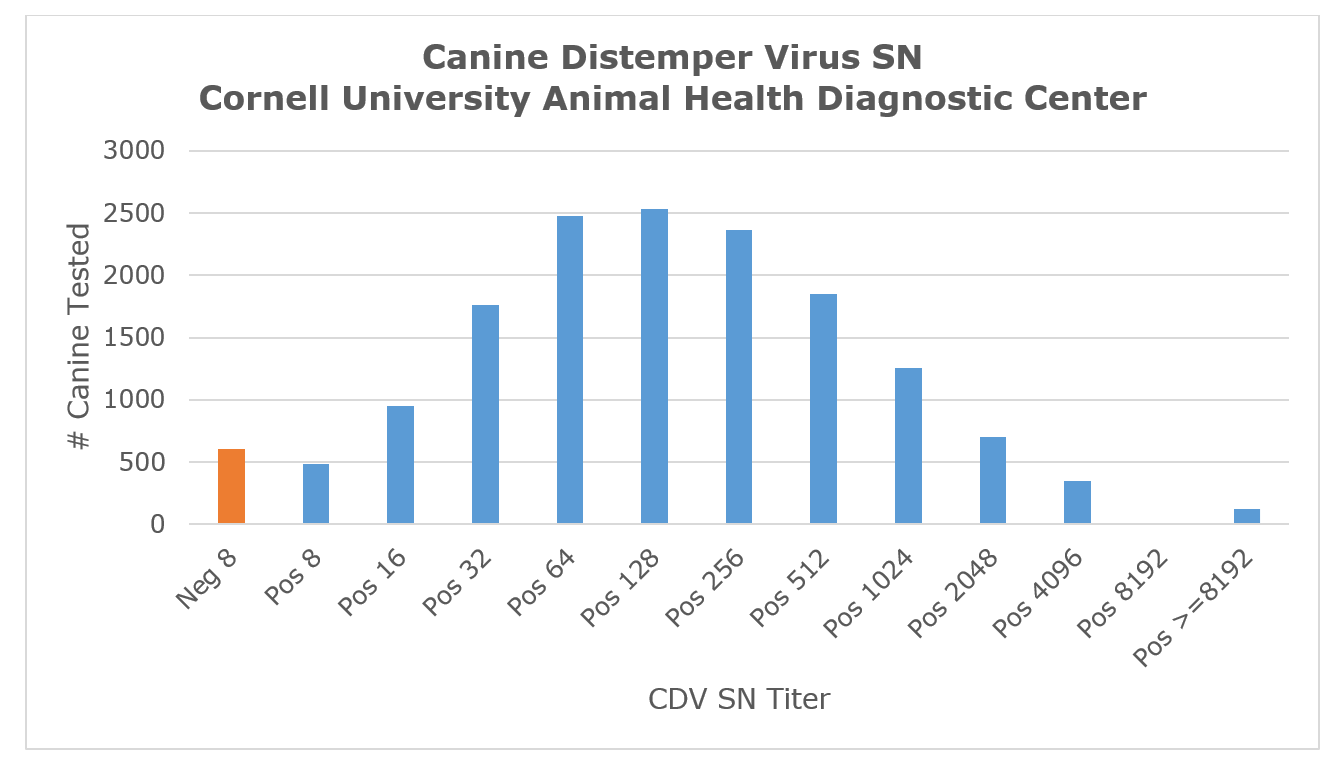Canine Distemper Virus Serum Neutralization
Canine distemper virus (CDV) is in the order Mononegavirales, family Paramyxoviridae, genus Morbillivirus and is currently classified as the species Canine morbillivirus. The genus Morbillivirus includes some of the most significant viral pathogens affecting mammals including CDV, measles virus, rinderpest virus, and peste des petits ruminants virus (PPRV or small ruminant morbillivirus). While measles virus, rinderpest virus and PPRV have limited host ranges, CDV is remarkable in its ability to infect members of at least 25 different families with most cases reported in Canidae, Felidae, Mustelidae and Procyonidae. While the domestic cat can be infected, replication of the virus is restricted and no clinical signs develop. Infection of large feline species such as tigers and lions, can however, be fatal. In developed countries, cases of CDV in dogs are invariably in unvaccinated or incompletely vaccinated animals. Clinical signs associated with CDV infection are influenced by age of the animal, strain of virus, and the environmental conditions in which the dog lives. Mortalities in outbreak situations range from 0 to 100% with overall inapparent infections in the range of 25-50%. With the widespread use of vaccines, many practitioners never see a clinical case of CDV in dogs. It may well be that with the enzootic infections in the US in wildlife such as raccoons, skunks, coyotes, and foxes the dog is no longer the primary reservoir for CDV.
With enhanced techniques for molecular detection and virus isolation, multiple clades/lineages of CDV have been identified and others will surely be added. The current vaccines found in the US are of the America 1 clade. There are clear antigenic differences among the CDV clades/lineages, but there are very limited data to suggest that the current vaccines if used to immunize dogs fail to protect dogs from clinical disease. The continuing lack of clinical disease in immunized dogs suggests that any positive antibody titer is indicative of protection from clinical disease and current vaccines are still effective.
The chart below represents over 15,000 tests for CDV neutralizing antibodies in canine samples over a 3 year period. Virtually all of these submissions represent healthy animals for which vaccine or maternal titers were being assessed. Some of the Neg 8 titers reported may be from dogs in special studies and not part of the general dog population. The AHDC uses a derivative of the Onderstepoort strain (most common CDV vaccine strain) in its serum neutralization tests.. NOTE: Antibody titers at the AHDC are reported as the reciprocal of the highest dilution that completely inhibits CDV infection/replication (at the 100% endpoint, e.g., 1:64 = Pos 64).



